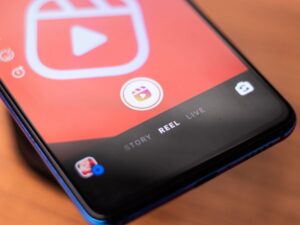
Video content reigns supreme in the marketing world. From Instagram Reels to YouTube tutorials, video is a powerful medium that helps brands connect with their audiences on a deeper level. However, when it comes to video marketing, one question frequently arises: Should your brand focus on short-form video or long-form video?
This blog post delves into the differences between short-form and long-form video content, the benefits of each, and how to strategically leverage both in your marketing efforts. We’ll also cover what to consider when thinking about short-form vs. long-form video content.
Before diving into the benefits of short-form and long-form videos, it’s essential to understand the basics of video marketing. Video marketing involves using video content to promote your brand, products, or services. It’s an effective way to increase engagement on your digital and social channels, educate your audience, and reach them with an engaging medium.
There are several types of video content you can create, from product demos to testimonials, vlogs, and live streams. The key to successful video marketing is understanding your audience and tailoring your content to meet their needs and preferences. Whether you choose short-form video or long-form video—or a combination of both—your content should always align with your overall marketing goals.
For a deeper dive into video marketing strategies, check out our guide to 2024 Video Marketing Basics: Strategy and Tips for Beginners.

Short-form video refers to any video content that typically lasts from a few seconds to a couple of minutes. The most common examples of short-form content include TikTok videos, Instagram Reels, and Instagram Stories. These short-form videos are quick, snappy, and designed to grab the viewer’s attention almost immediately.
The rise of platforms like TikTok has significantly popularized short-form video, making it a must-have in many brands’ marketing arsenals. The primary benefit of short-form video is its ability to deliver a message quickly and efficiently, which is especially valuable in our fast-paced digital world where attention spans are shorter than ever.
A solid short-form content strategy is all about capturing attention quickly and delivering value in just a few seconds. With the rise of platforms like TikTok, Instagram Reels, and YouTube Shorts, short-form content has become an essential tool for engaging users who are scrolling fast and looking for instant gratification.
The key to an effective short-form content strategy is creating punchy, shareable videos that entertain, educate, or inspire—while keeping your brand message clear and concise. Consistency is also crucial, as regularly posting short-form content helps keep your audience engaged and coming back for more.
A successful short-form video content strategy involves creating videos that are not only engaging but also aligned with your brand message. Here are some tips:
For more tips on the benefits of short-form video and creating impactful short-form content, visit our Creative Services page.

Long-form video, on the other hand, is any video content that exceeds a couple of minutes in length. This type of video can range from detailed tutorials to full-length documentaries. YouTube is one of the primary platforms where long-form content thrives, allowing creators and brands to tell more in-depth stories and offer comprehensive insights into a subject.
Long-form video is particularly effective for storytelling, as it allows brands to dive deep into topics, providing value and fostering stronger connections with their audience. It’s a powerful tool for educating, entertaining, and building trust with viewers.
Long-form content allows you to dig deep into these issues, offering not just information, but emotional connection. But remember, storytelling isn’t just about talking at your audience—it’s about engaging them in a way that makes them feel involved.
Use long-form content to ask questions, share user-generated content, and encourage conversations in the comments. This creates a sense of community and dialogue that goes beyond the screen.
Here are some of the prime benefits of long-form video content:
Deep Storytelling: Long-form video for storytelling allows brands to dive deep into their narratives, providing detailed explanations, tutorials, or documentaries. This depth can foster a stronger emotional connection with the audience and build trust.
Enhanced SEO: One of the biggest benefits of long-form video is that it often performs better in search engine rankings, particularly on platforms like YouTube, where watch time is a critical factor in search visibility. This makes long-form content a valuable asset for improving your brand’s online visibility.
Educational Content: Long-form video is ideal for educational purposes, allowing brands to explain complex topics in detail. This format is particularly effective for industries that require in-depth tutorials or product demonstrations.
Audience Retention: Although short-form videos capture quick attention, long-form content can retain viewers for more extended periods, especially if the content is valuable and engaging. This can lead to higher levels of audience loyalty and trust.
When deciding between short-form vs. long-form video content, there are a few things to consider. First, it’s important to understand that long-form video content requires a more thoughtful approach due to its extended length. Here’s how to maximize the impact of long-form content:
Long-form video for storytelling is about taking your audience on a journey. Whether it’s a documentary, a tutorial, or a behind-the-scenes look, focus on telling a compelling story that keeps viewers engaged from start to finish.
Ensure your long-form content is valuable to your audience. This could be through education, entertainment, or in-depth insights. The more value you provide, the more likely viewers will stay until the end.
Since long-form content requires a longer commitment from viewers, invest in high-quality production to make the experience worthwhile. This includes clear audio, sharp visuals, and professional editing.
Break your long-form content into chapters or segments to make it easier for viewers to navigate. This is particularly useful on platforms like YouTube, where you can add timestamps to guide viewers through different sections of your video.
Take full advantage of the benefits of long-form video. Don’t just rely on one platform to distribute your long-form content. Promote it across multiple channels, including social media, email newsletters, and your website.

When evaluating short-form vs. long-form video content, consider your brand goals, audience, and the platforms you’re targeting. Short-form video is perfect for capturing attention and driving quick engagement, making it ideal for social media campaigns, product launches, and brand awareness efforts.
On the other hand, long-form video is better suited for content that requires more explanation, such as tutorials, case studies, or behind-the-scenes footage. If your goal is to build trust, educate your audience, or enhance your brand’s SEO, long-form content is the way to go.
However, it’s not always a matter of choosing one over the other. A successful video marketing strategy often involves a mix of both short-form and long-form content, tailored to different stages of the customer journey. Weigh the benefits of long-form video and short-form content for each project.
Different platforms favor different video lengths, and understanding these preferences can help you optimize your content strategy.
TikTok: While TikTok recently extended its video length to 10 minutes, the platform is still best known for its short-form content, with videos around 15-60 seconds performing the best.
Instagram: Instagram Reels and Stories are ideal for short-form videos, typically ranging from 15 seconds to 1 minute. However, IG Stories can be a great way to showcase long-form video content by splitting the video into many 60-second segments with video editing software or splitter apps. This allows for longer content to play like a continuous video for your audience.
YouTube: YouTube is the go-to platform for long-form content, with videos ranging from 10 minutes to several hours. However, YouTube Shorts, a short-form video feature, is gaining popularity as well.
Facebook: Facebook accommodates both short-form and long-form videos, but shorter videos (under 3 minutes) tend to perform better in terms of engagement. Longer videos can be effective for live streaming or in-depth tutorials.
For brands focusing on TikTok, check out our TikTok Marketing Services to learn how to optimize your content for TikTok.
When it comes to long-form content, YouTube is the undisputed king. This platform has always favored videos with more substance, and it’s where viewers go when they’re ready to sit down and learn or absorb detailed information.
Long-form content for YouTube isn’t just about producing longer videos; it’s about giving your audience something they value so much that they’re willing to stick around for 10, 20, or even 30 minutes.
So, what works best in this space? Think of YouTube as a place where people go to learn, be inspired, or take a deep dive into their interests.

TikTok recently extended its video length allowance to 10 minutes, and that’s great news for brands who want different ways to connect with their customers. While TikTok built its fame on short-form video, the platform now gives brands the opportunity to embrace long-form content, and that’s where you can truly stand out.
Long-form content for TikTok gives you the chance to create deeper, more meaningful connections with your audience. While the fast-paced, short-form content will always have a place, long-form video allows you to break free from the 15-second constraint. By producing 5- to 10-minute videos, you can share more in-depth information that’s both valuable and engaging.
So, what kind of long-form content works best on TikTok?
In a space crowded with quick, flashy short-form content, long-form content on TikTok gives you the chance to be different. While others compete for fleeting attention, you’re offering something more substantial and memorable. And that’s exactly how your brand can break through the noise and gain a loyal, engaged following.
Speaking of storytelling, this is where long-form video truly shines. When you have more than just a few seconds to work with, you can craft a narrative that draws viewers in, keeps them hooked, and leaves a lasting impression. And stories are what humans connect with the most.
Whether it’s a brand’s origin story or showcasing a day in the life of your team, long-form video for storytelling lets you go beyond surface-level content. Here are a few ways to do it:

When it comes to content, there’s no one-size-fits-all answer. Both short-form content and long-form content have their place in your marketing strategy. Whether you’re using short-form content on TikTok or leveraging long-form video for storytelling on YouTube, the key is to offer value, engage your viewers, and keep them coming back for more.
A hybrid approach that combines both short-form and long-form video can offer the best of both worlds. Here’s when to consider using a combination of both:
In the debate of short-form vs. long-form video content, the answer isn’t always clear-cut. Both have unique benefits and can serve different purposes in your video marketing strategy. The key is understanding your audience, platform, and goals to determine the right mix of video content for your brand.
By leveraging the strengths of both short-form and long-form video, you can create a dynamic and engaging content strategy that resonates with your audience, enhances your brand’s visibility, and drives meaningful engagement.
For more insights on video marketing, visit our Creative Services page, and explore how we can help you create impactful video content that aligns with your brand’s goals.
Looking to enhance your TikTok strategy? Discover how we can help with TikTok Marketing Services, tailored to your needs.
Written By: Melanie Granuzzo, Account Director